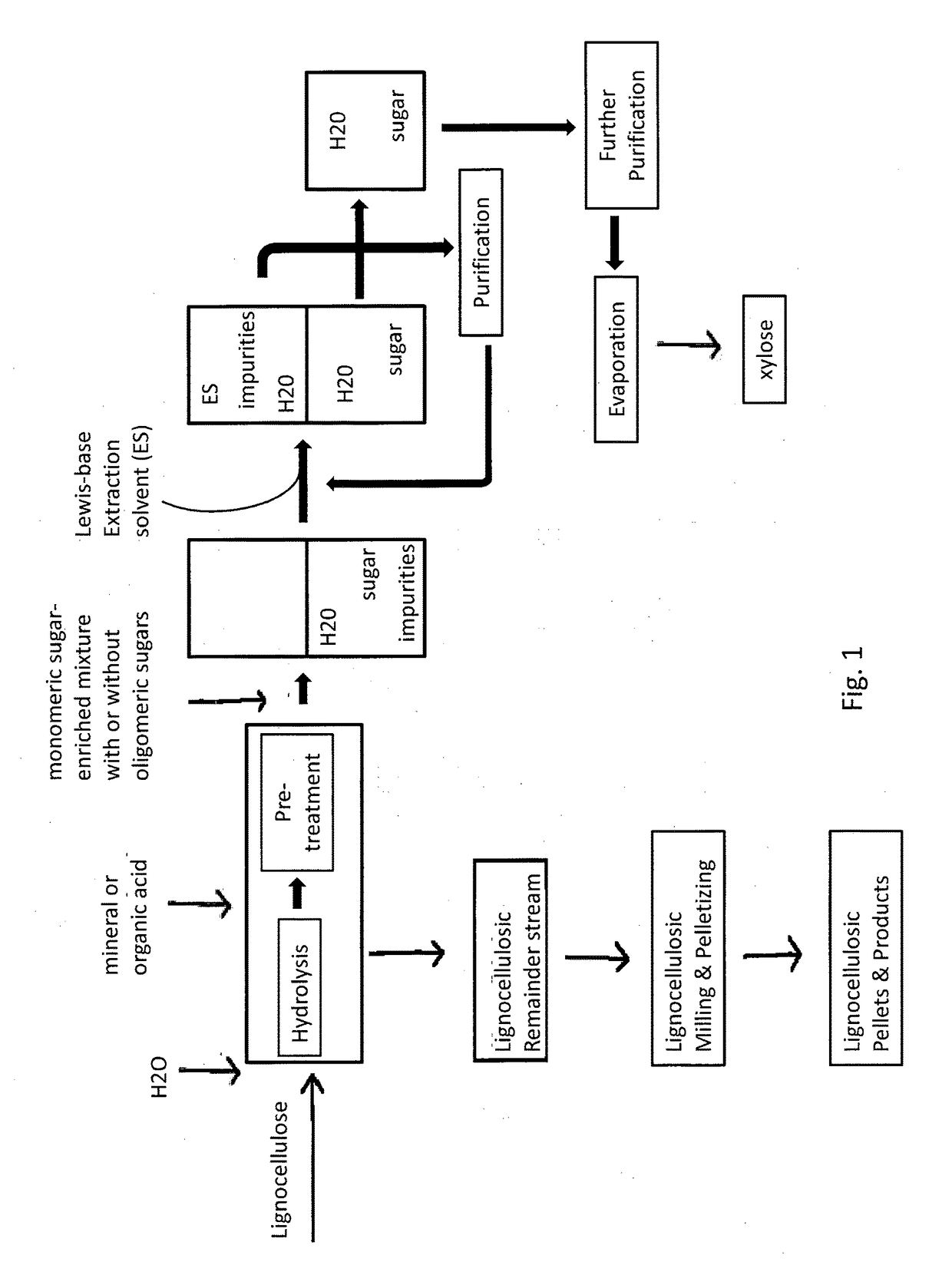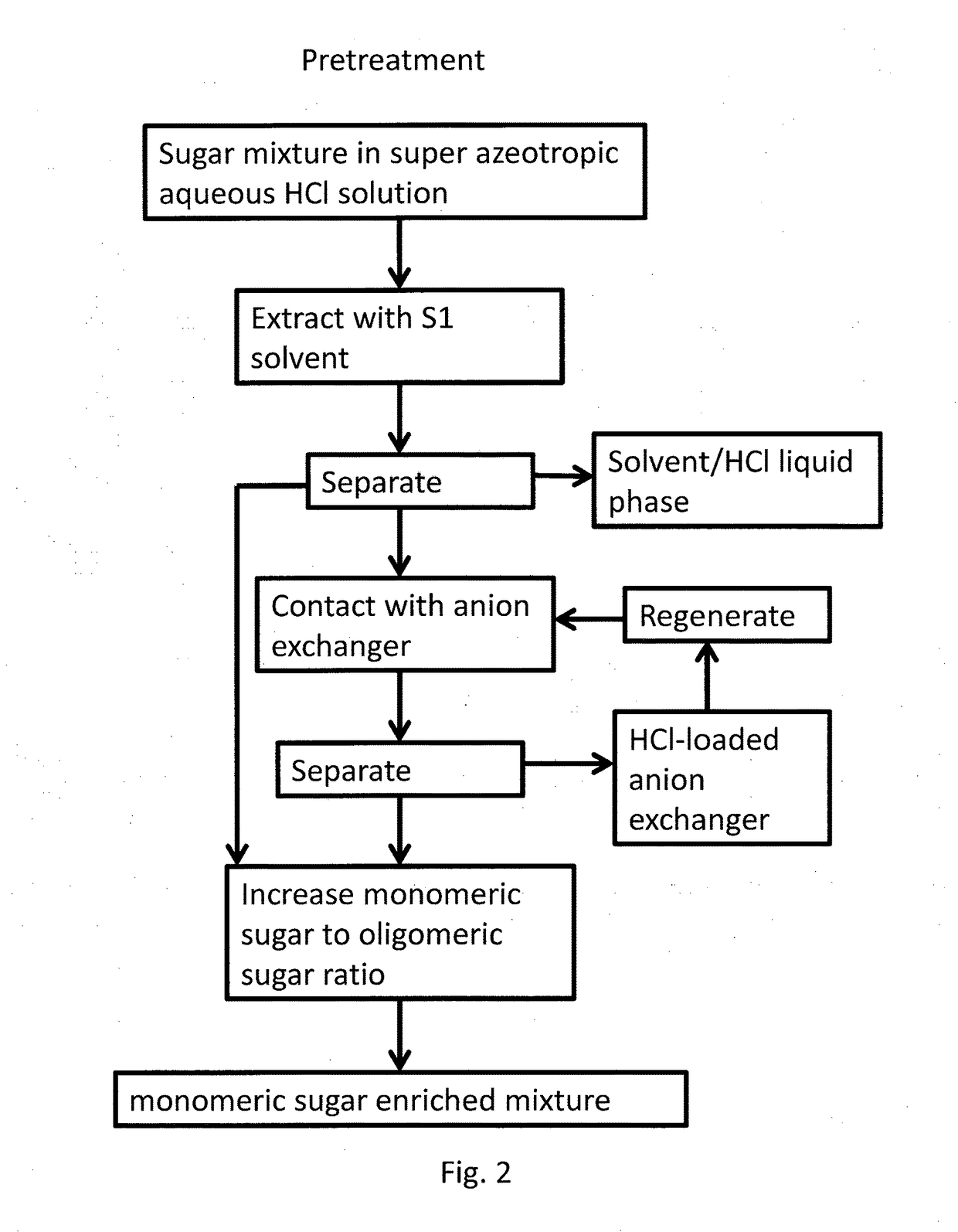Method for treating lignocellulosic materials
a technology of lignocellulosic materials and lignocellulosic acid, which is applied in the direction of sugar derivates, crystallization separation, separation processes, etc., can solve the problems of maintenance challenges and well-developed chromatographic techniques
- Summary
- Abstract
- Description
- Claims
- Application Information
AI Technical Summary
Benefits of technology
Problems solved by technology
Method used
Image
Examples
example 1
n of Xylose with a Lewis-Base Extraction Solvent
[0079]Aqueous xylose containing pre-hydrolysis liquid was mixed with an equal volume of organic solvent selected from the Lewis basic solvents mentioned above. In a typical procedure 10 g of TBPO was mixed with 10 ml of pre-hydrolysis liquid and mixed vigorously. Mixture was centrifuged at 25° C. for 2 min at 4000 rpm. Phases were separated and obtained purified xylose water solution was subjected to UPLC-analysis (see analytics).
[0080]The high water content in TBPO also extracts xylose to the organic phase. This offers a unique opportunity to use the TBPO as a directional extraction solvent for water AND xylose. The organic phase from the above mentioned extraction was heated to 80° C. in a separated flask and a phase separation of the dissolved water was observed. The same water phase can also be obtained by diluting the TBPO with hexanol. This water phase was analyzed by UPLC and the purity of the xylose was 96%. The distribution co...
PUM
| Property | Measurement | Unit |
|---|---|---|
| temperature | aaaaa | aaaaa |
| sizes | aaaaa | aaaaa |
| sizes | aaaaa | aaaaa |
Abstract
Description
Claims
Application Information
 Login to View More
Login to View More - R&D
- Intellectual Property
- Life Sciences
- Materials
- Tech Scout
- Unparalleled Data Quality
- Higher Quality Content
- 60% Fewer Hallucinations
Browse by: Latest US Patents, China's latest patents, Technical Efficacy Thesaurus, Application Domain, Technology Topic, Popular Technical Reports.
© 2025 PatSnap. All rights reserved.Legal|Privacy policy|Modern Slavery Act Transparency Statement|Sitemap|About US| Contact US: help@patsnap.com



